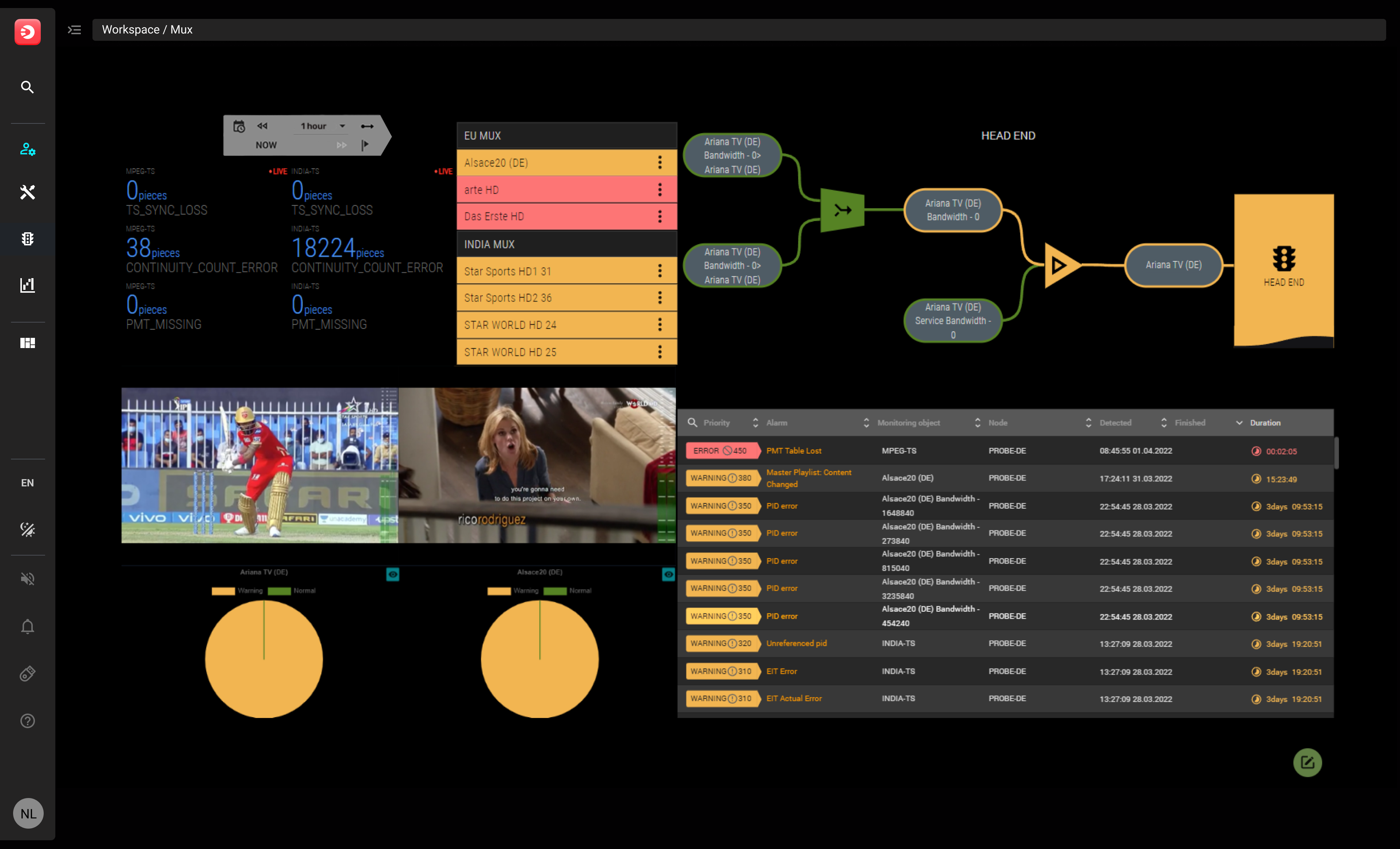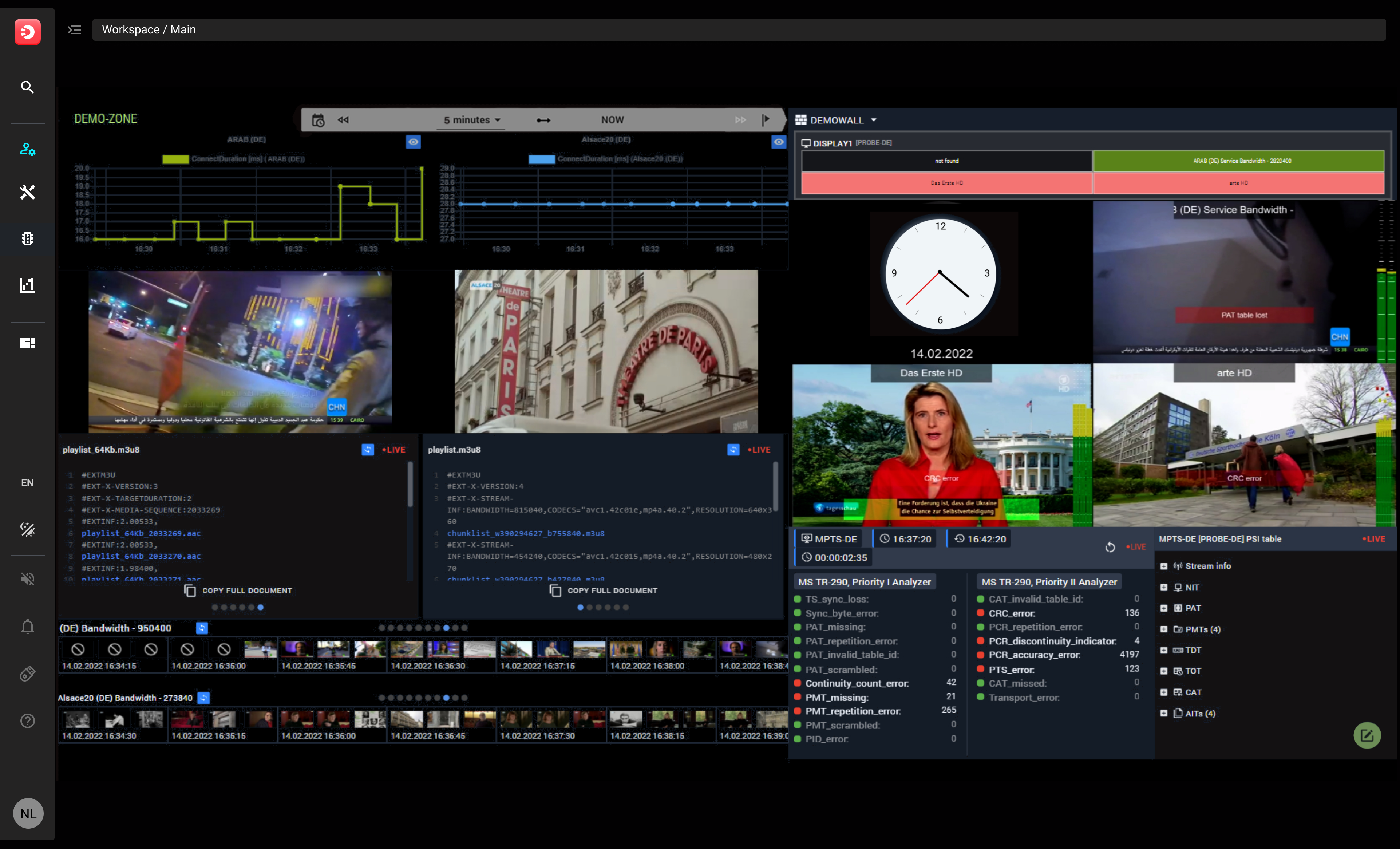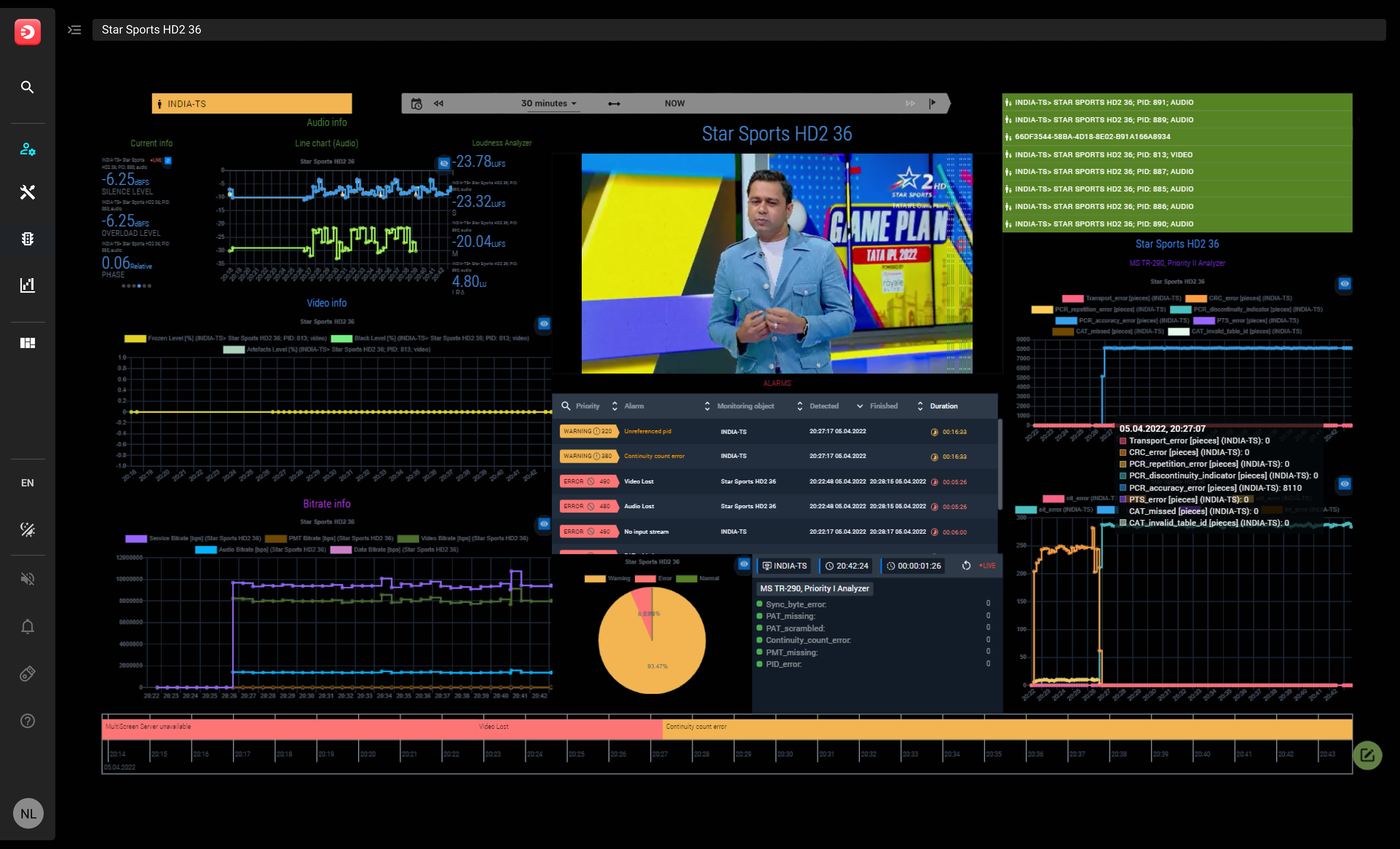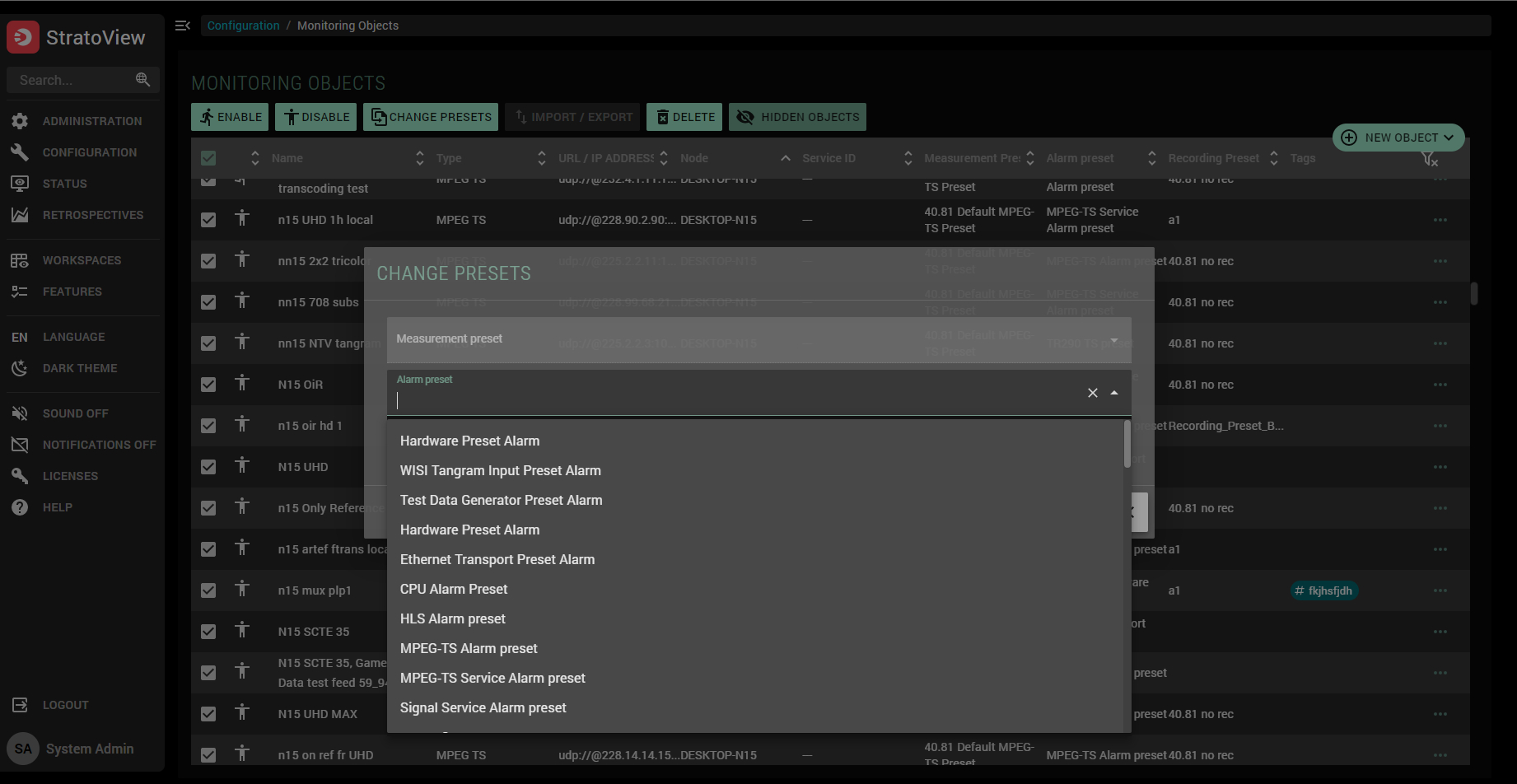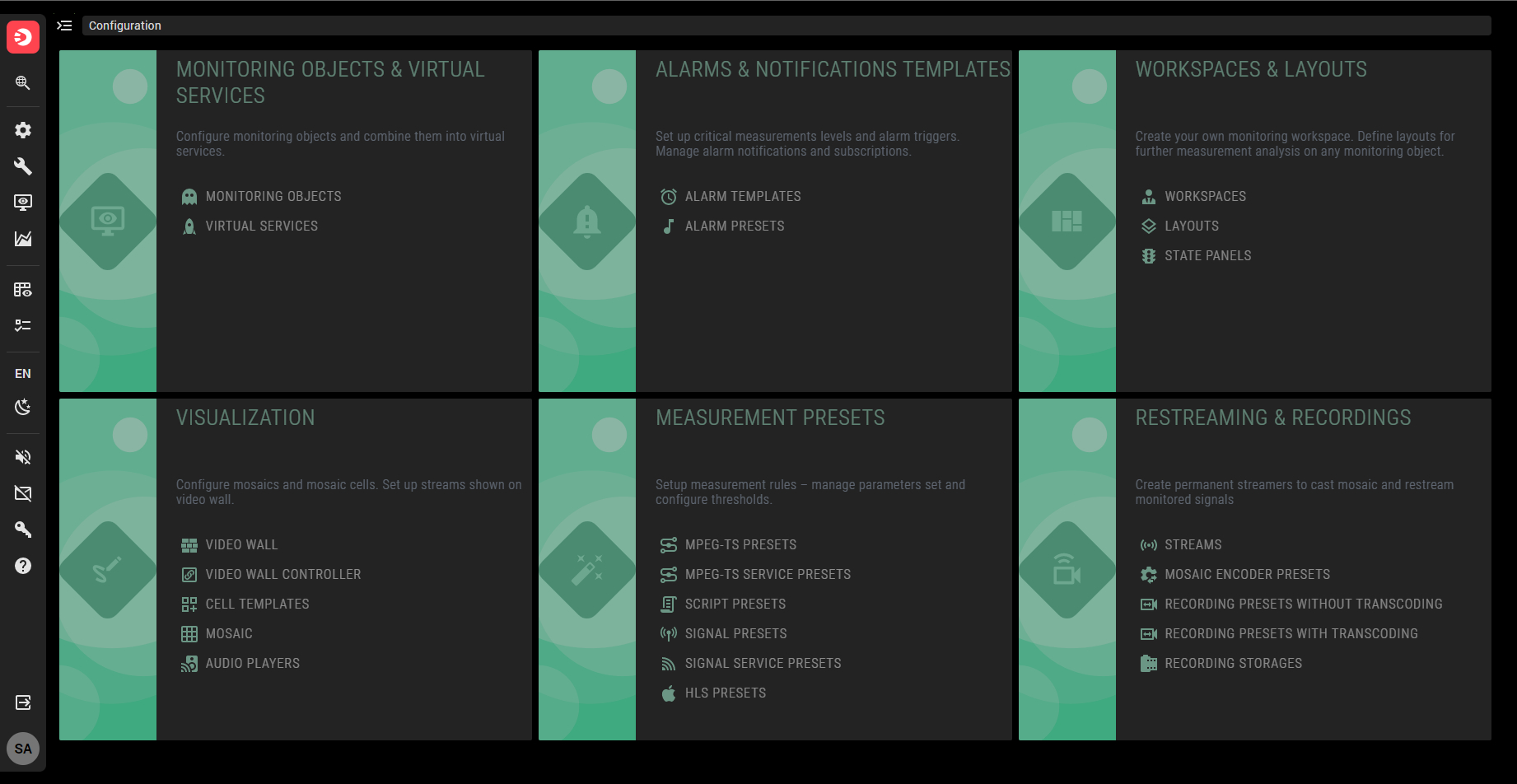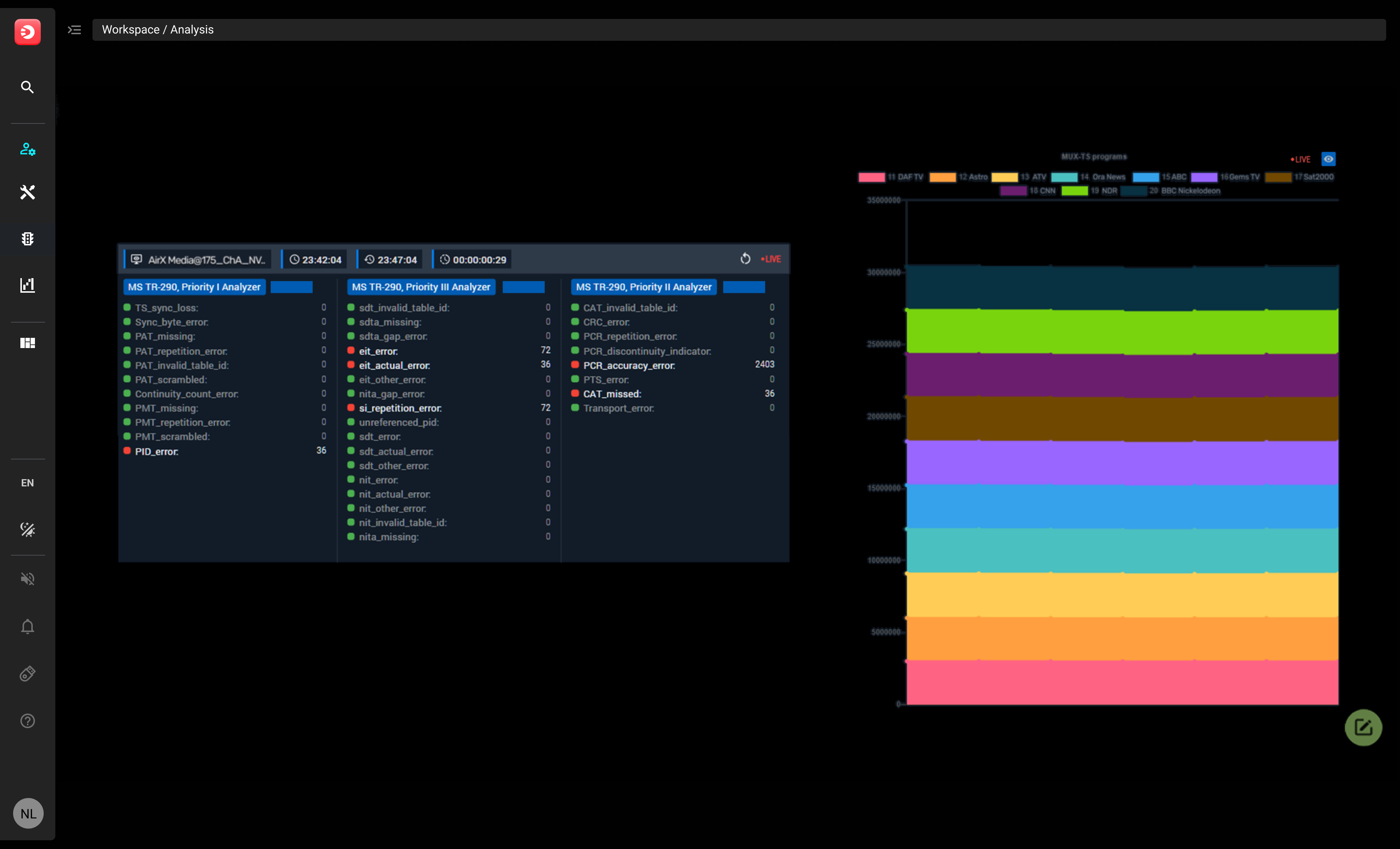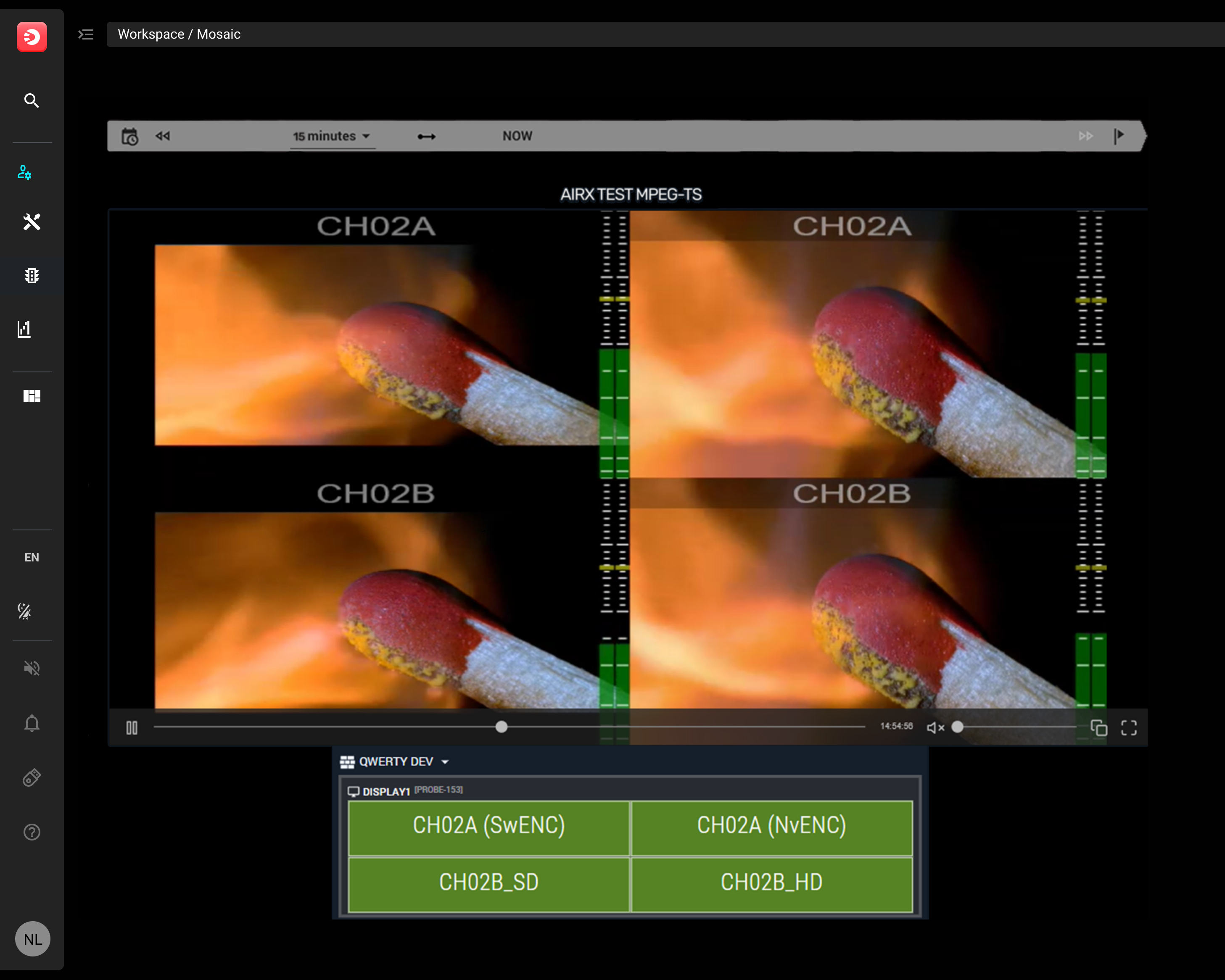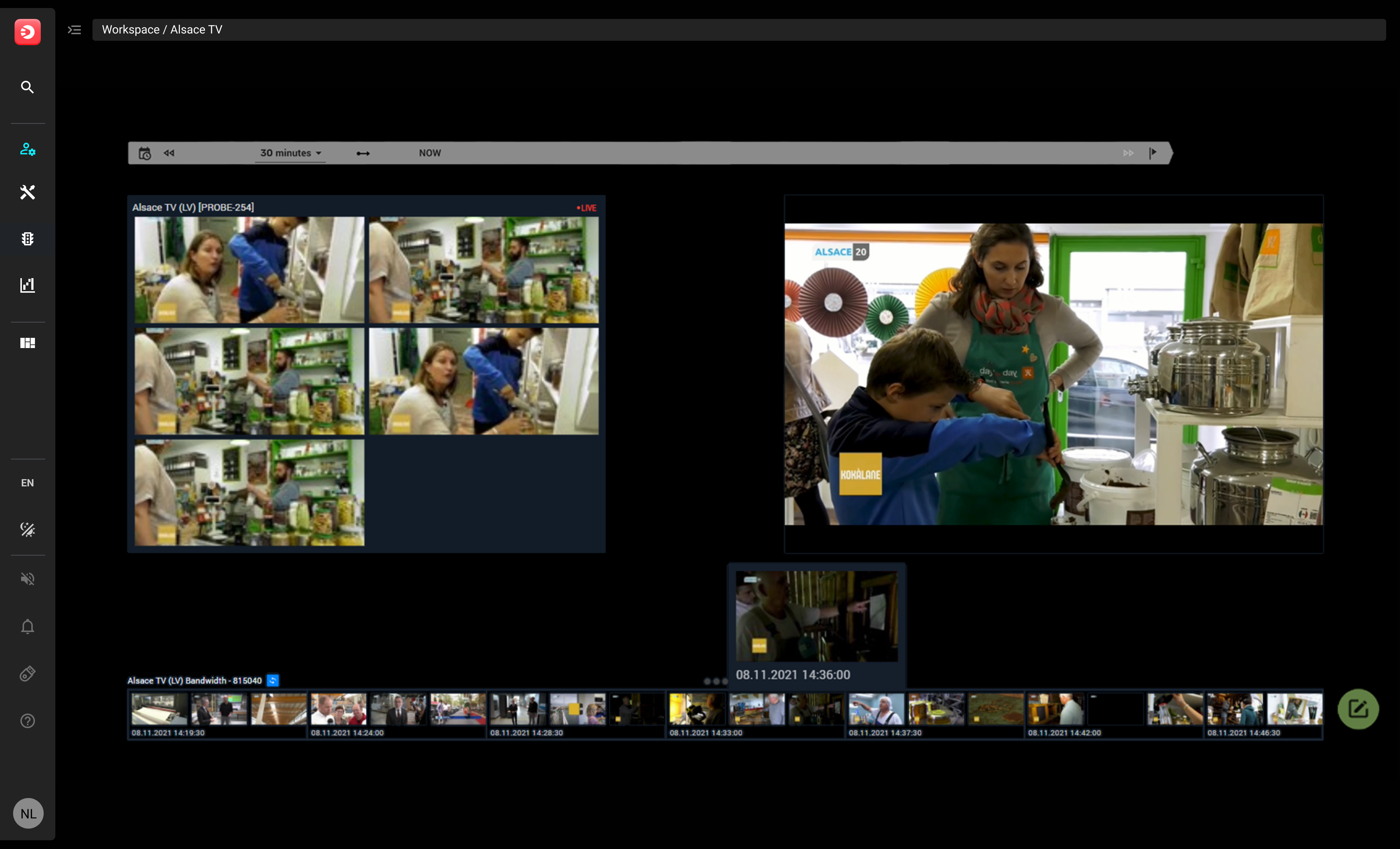StratoView
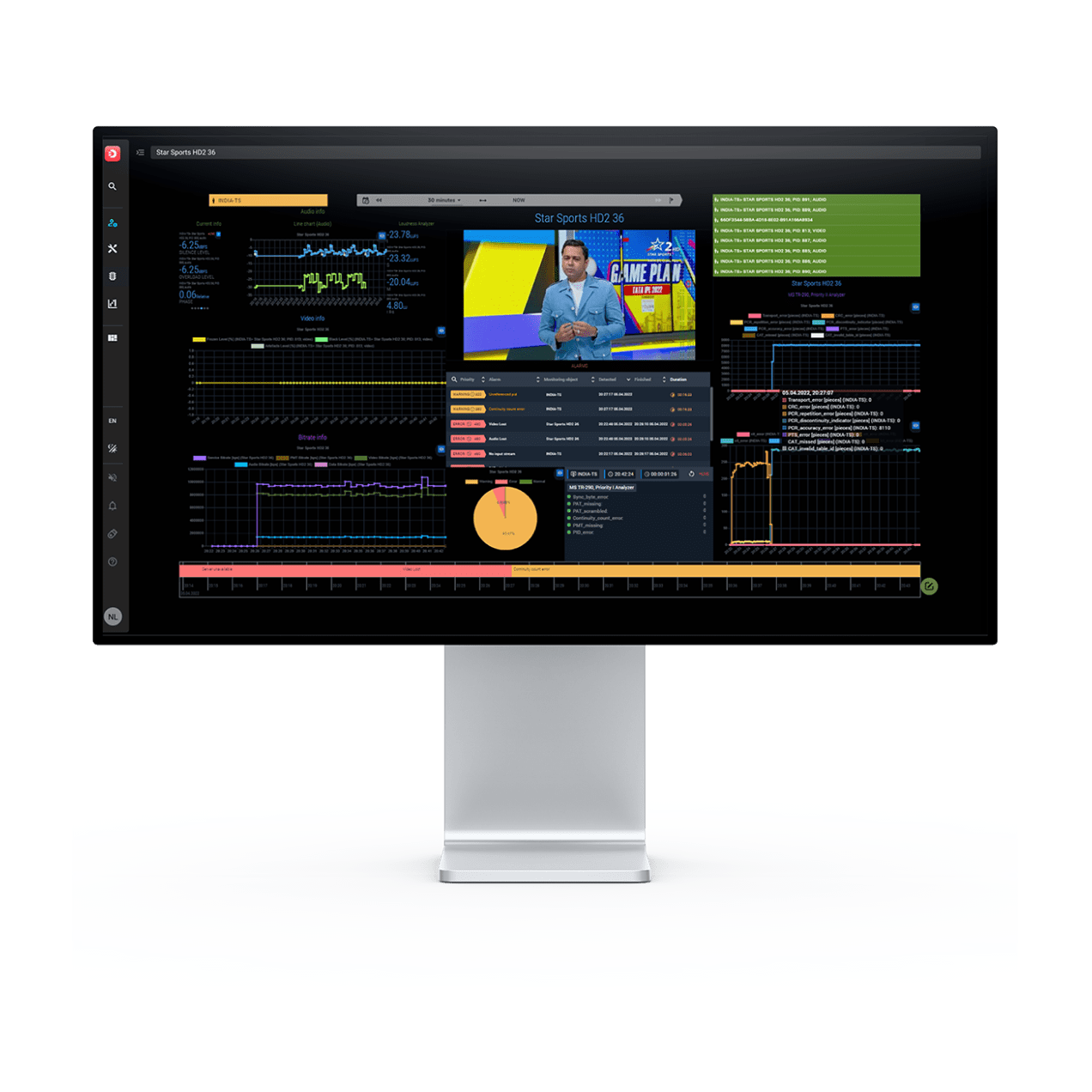
Your Broadcast Media Monitoring Tool
As broadcast networks scale and transition to IP, OTT, and cloud protocols, operators constantly aim to maintain video network uptime to guarantee end-users the best quality of experience. We provide broadcast media monitoring solutions, empowering broadcasters and content providers with tools to manage QoE, QoS, visualization, and analytics, while also reporting and maintaining Service Level Agreements (SLA’s).
With today’s distributed network architectures, the challenges of monitoring and video signal visualization are altering the ways video and TV content is transmitted. Our broadcast monitoring solutions are engineered with remote operations in mind, effectively enabling you to control your entire network across buildings, cities, and countries—all from any point on Earth and beyond!
Our modular approach to broadcast media monitoring offers the flexibility needed for different network topologies and for various physical and terrestrial interfaces. Managing video networks entails controlling a plethora of non-video-centric equipment such as routers, switches, and other devices that form a video headend or a production facility. Our integrated analyzer solution allows for this equipment’s monitoring as part of the video network, offering a complete comprehensive network overview. This simplifies troubleshooting and maintains network uptime using a single unified platform. Alongside monitoring, other aspects of video network management include compliance recording and signal aggregation. Our solution is modular, with components (probes) that can be added on demand to meet new requirements as you scale.
Key features
Real-time broadcast monitoring and visualization tools
Control DVB, Terrestrial, Cable, DTH, IPTV, and OTT streams
Visual and instrumental tools for monitoring and control of all components
Distributed architecture built around remote TV and video operations
Mosaics are available remotely via HLS, SRT, NDI, or UDP
Ability to remotely control any video stream in full resolution
Detailed Reporting and Analysis using the analyzer (SLA)
Advanced graphing and video analysis tools
Monitoring of non-broadcast devices like routers, switches via protocol (API, SNMP)
Logical service-level chain views for better visualization
Product highlights
- Create high-level system chain views with data-rich graphical objects. These objects can be configured to represent “virtual services” or channels and user-defined signal flow, with predefined relationships for effective broadcast media monitoring.
- The system interface can be customized with widgets that can be selected and placed on-demand. Custom views can be crafted for different roles within the organization, limiting access and control based on job functions.
- The system includes default templates with standard visualization views pre-configured. A built-in presentation editor is available to customize the graphical user interface.
- Configuring multiple objects or devices is simplified using our batch configurator tool. This reduces setup and configuration time and speeds up the process for setting up multiple sites and locations. Powerful search, sort, and filtering tools are also included to accelerate system deployment.
- The system offers a multitude of default alarm templates. For more specific cases, custom templates for alarms and triggers can be created. These triggers can be grouped, combined, or utilized in conjunction with other conditional commands to generate custom alarms.
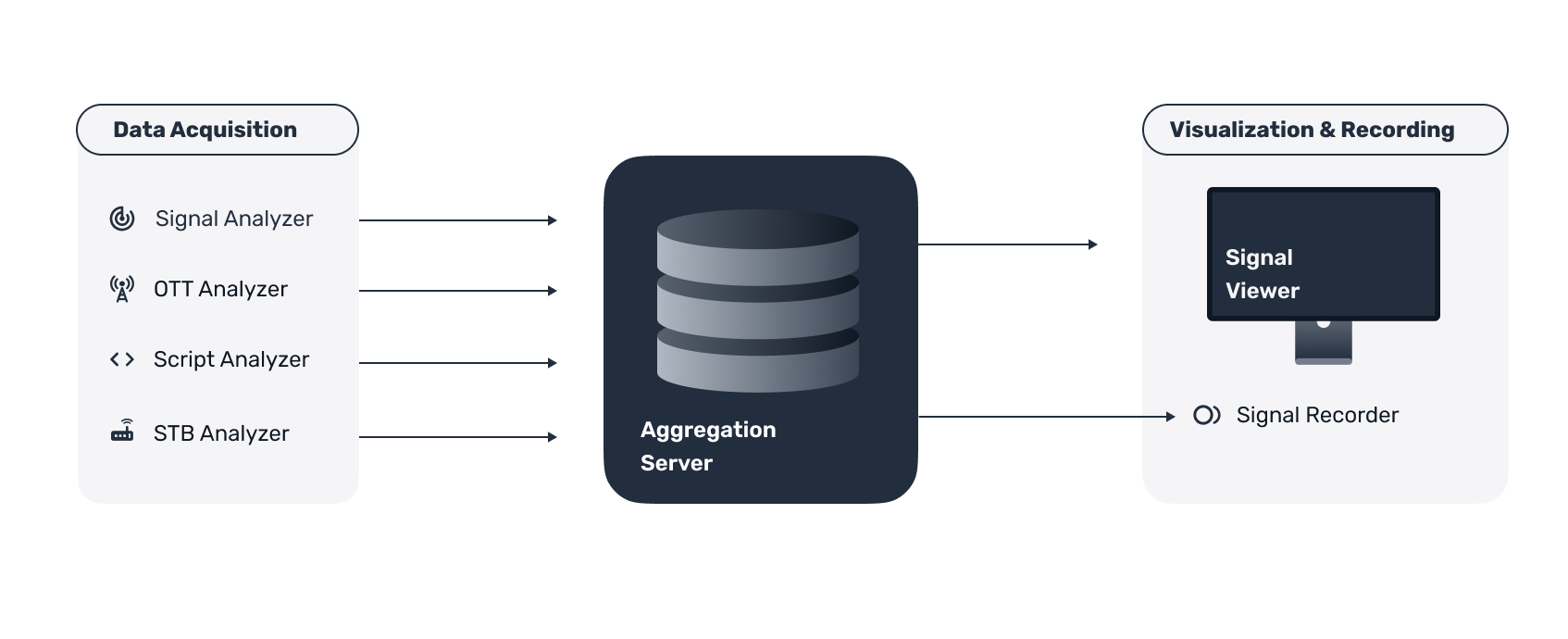
The system architecture is comprised of three components that provide the main system functionality:
- Data acquisition (input)
- Aggregation (storage and analytics)
- Visualization/Recording (data output)
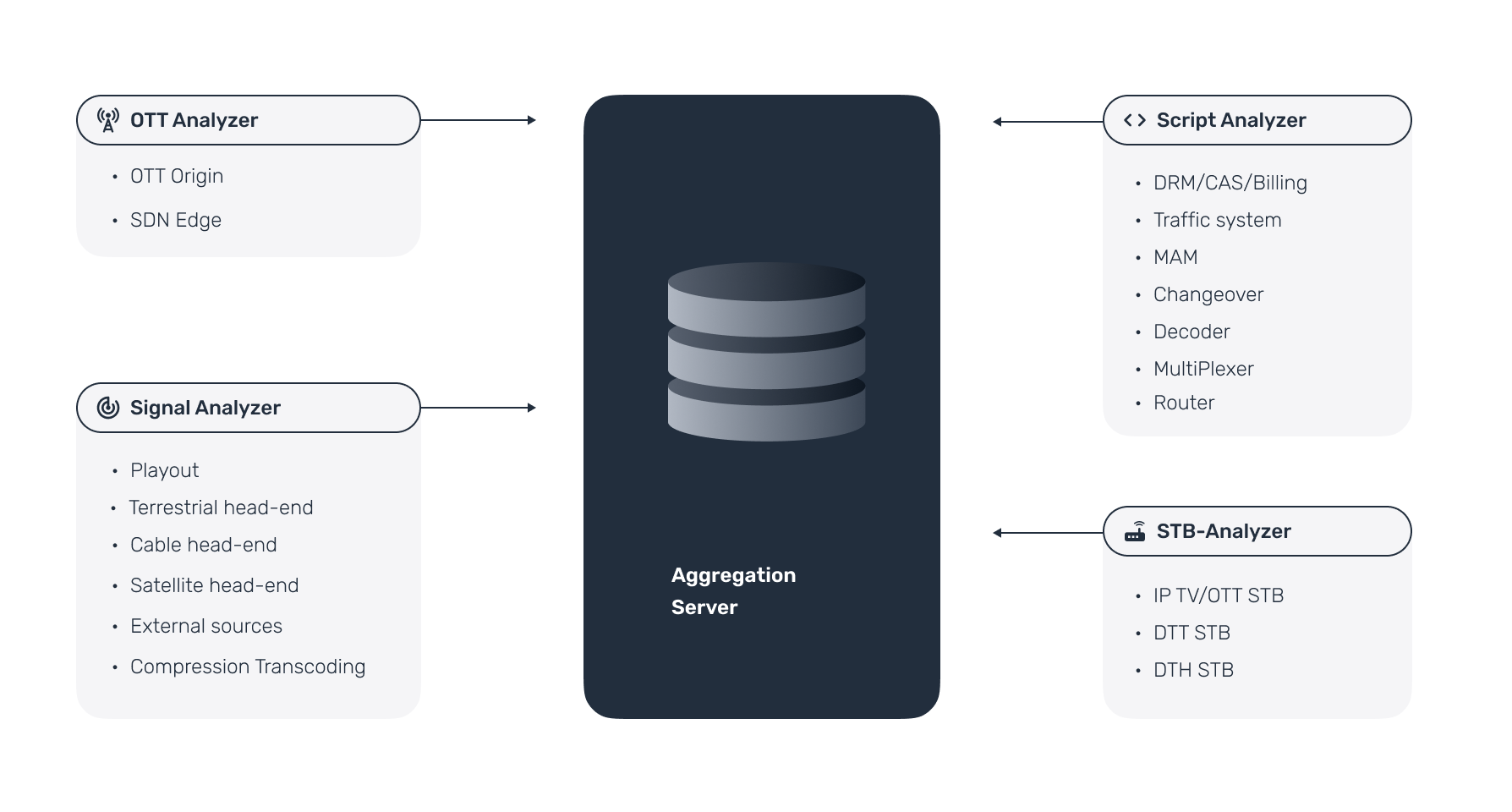
Multiple modules (analyzers) report to a central aggregation server that in turn consolidates the data and provides highly customizable remotely accessible status panels, analysis views and mosaics.
Key system module used for collecting service quality metrics, media signals and traffic streams. This module supports the following types of formats and interfaces:
- SDI (SD/HD/UHD)
- ST 2110
- ST 2022-6
- CVBS/HDMI
- SRT
- NDI
- UDP/RTP
- RTSP/RTMP
- T2-MI
Use more than 100 metrics for assessing signal quality and integrity, including the following standards and measurements:
- QoS: ETR 101290, RFC 4445
- QoE: Artifacts/Macroblocking, Frozen/Black Screen, MOS, EBU R 128
- Metadata: Teletext, Subtitles, SCTE 104/35, EPG
System module for collecting service quality metrics and monitoring of OTT services.
This module supports the following formats:
- HLS
- MPEG-DASH
And provides the following monitoring capabilities:
- Master playlist analysis (manifest)
- Media playlist analysis
- Media Segments analysis
- Verification of Content accessibility and storage depth for:
- Catch-UP
- VOD
Module for importing and controlling external devices or systems.
This module enhances the system ability to interface with 3rd party equipment for monitoring and management using user-defined scripts. The scripting capability enables the system to gather various status metrics and can forward them to the aggregation module for analysis.
With Script-Probe you now have a total view of your network from a single management platform.
Typical devices that can be monitored:
- Switches
- Backup units
- Splitters
- Logo inserters
- Encoders/Decoders
- Multiplexors
- Routers
- etc…
Ability to acquire data from and make API calls to:
- Traffic systems
- MAM
- Broadcast servers
- Billing systems
- CAS/DRM systems
- EPG servers
- etc.
Open standards scripting using multiple protocols:
- REST
- JSON-RPC
- Requests over Telnet and SSH
- SNMP
- etc.
A hardware and software module that performs alternate channel switching on subscriber STB’s. Monitors end user quality of experience and forwards data analytics to the central aggregation server.
Technical Specifications
- 3G-SDI (SMPTE-424M, 10 bit, 3 Gbit/s)
- HD-SDI (SMPTE-292M, 10 bit, 1,5 Gbit/s)
- SD-SDI (SMPTE-259M, 10 bit, 270 Mbit/s)
- 12G UHD-SDI (SMPTE ST-2082, 12 Gbit/s)
- UHD Quad-link 3G-SDI (SMPTE ST-425, 4 x 3 Gbit/s)
- DVB-ASI (ETSI EN 50083-9) Bitrate range 0..214 Mbit/s
- HDMI
- Composite (NTSC, PAL, SECAM)
- Analog (NTSC, PAL, SECAM)
- AES/EBU (24 bit/ 192 kHz) channels
- IP/Ethernet (ETSI TS 102 034)
- DVB-T/T2 (ETSI EN 300 744,302 755)
- DVB-S/S2 (ETSIEN 300 421, EN302-307, EN301-210)
- DVB-C/C2 (ETSI EN 300 429 Annex A/B/C)
- MPEG-2 TS (ISO/IEC 13818-1), MPTS or SPTS
- DVB T2-MI Streams (ETSI TR 101 290-1, А14-1)
- FLASH (1889, 2326, 3550)
- MPEG-DASH
- RTMP streams (Real Time Messaging Protocol). H.264 - AAC and MP3 streams
- MMS&MMSH Microsoft Media Server Protocol & MMS over HTTP
- RTSP (RFC 1889, 2326, 3550)
- HLS (HTTP Live Streaming Monitoring)
- NDI (NewTec)
- SRT (Haivision)
- SDI over IP (SMPTE 2022-6)
- SMPTE 2110
- MPEG-1 (ISO/IEC 11172-1)
- MPEG-2 (ISO/IEC 13818-1)
- MPEG-4.2 (ISO/IEC 14496-2)
- MPEG-4.10 (H.264, ISO/IEC14496-10)
- HEVC (H.265) до 4K
- JPEG 2000
- MPEG-1 Layer II (ISO 11172-3)
- Dolby Digital (AC-3, ATSC A.52b)
- AAC/ADTS/ADIF (ISO/IEC 13818-7, ISO 14496-3)
- SMPTE 302M
- Switches
- Backup units
- Splitters
- Logo inserters
- Encoders/Decoders
- Multiplexors
- Routers
- Traffic systems
- MAM
- Broadcast servers
- Billing systems
- CAS/DRM systems
- EPG servers
- REST
- JSON-RPC
- Requests over Telnet and SSH
- SNMP



